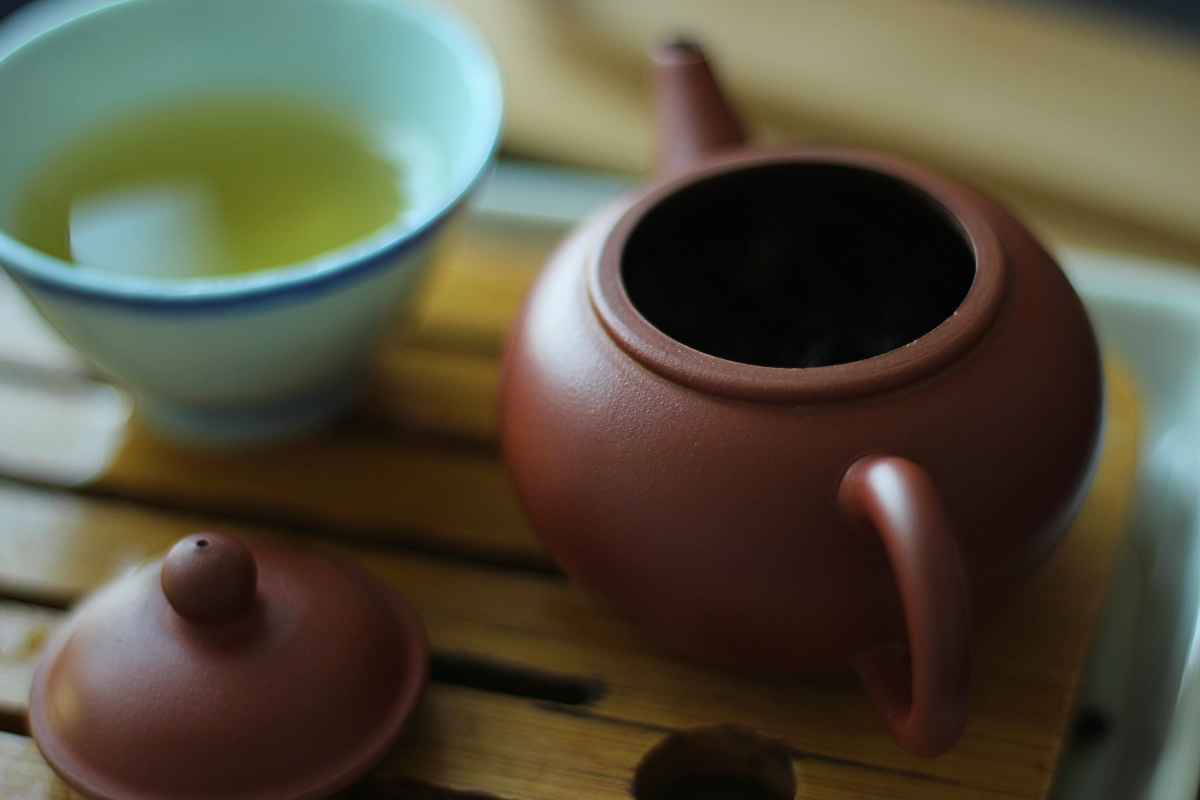One of the things I try to keep in mind while browsing for new teas is to look for unusual things. Today’s tea is one of those peculiar things as it’s an aged white tea that is not from Fuding. I know that not all white tea is from Fuding, but at least the majority of white teas available in the West is. That is why it’s interesting to try the 2014 Jianyang Lao Bai White Tea from the Jianyang area in Sichuan Province. ANMO Art Cha (website / Instagram) in Düsseldorf was kind enough to give me this sample so I could discover what this tea had to offer.
Have you considered subscribing to Tea Adventures? You can enter your email address in the sidebar and get updates whenever I publish a new article. You never have to miss an article again by joining our mailing list.
2014 Jianyang lao Bai White Tea
This tea is from the Jianyang area, which is in Sichuan Province in China, and it is made from the Lao Bai cultivar. The tea leaves are pressed into cakes and change dramatically over a relatively short time period. Before it’s ready for consumption, the producer first stores the tea cakes for 500 days. This is necessary for the flavours to develop and that the producer can control this ageing process. Due to this process, the 2018 version isn’t available yet. I also have the 2015, 2016 and 2017 versions of this tea so I’m curious to see how ageing changes this tea.
The colour of the dry leaves is a mixture of brown tints with some lighter ones as well. I see big leaves, stalks and some buds. The aroma is really sweet! It’s almost like smelling wine gums and I’m also getting light roasted notes.
The aroma of the wet leaves is still sweet. It’s a warming and candy-like sweetness in combination with some hints of red fruits. The colour is very dark brown and I spot big leaves, smaller pieces and massive stems.
Tea Tasting
- Water 90°C
- 5g for a 90ml gaiwan
- 1 rinse
- 6 Infusions
Infusions
Infusion 1 (25 sec): this infusion has a light yellow colour. After the first sip, I immediately think that this is how every white tea should taste. It’s really sweet and it also has some roasted notes to it. I’m getting some darker and roasted flavours. This reminds me a lot of a rock oolong or a highly oxidised and aged oolong.
Infusion 2 (25 sec): the colour is a bit darker yellow. It’s a bit less sweet, but still a lot sweeter than your average white tea. The roasted notes become a bit more prominent. The aftertaste is mainly roasted with a sweet undertone of wine gums.
Infusion 3 (35 sec): the aroma of this infusion clearly resembles a good Da Hong Pao. The colour is a lot deeper yellow. The main flavour has changed quite a bit. The roasted undertone is still noticeable but the sweetness has changed and I’m getting something like fresh apples all of a sudden and a roasted finish.
Infusion 4 (40 sec): the colour is getting more orange/amber and the aroma is comparable to an aged dark oolong and/or a good yancha. I’m not only getting roasted notes now because I’m also experiencing some hints of coffee and these linger through this infusion. In addition to all this, the undertone is still sweet.
Infusion 5 (50 sec): this infusion is not as sweet anymore and the further I am into the session, the more it tastes like a rock oolong. Both in the appearance of the liquor and flavour profile. There are dominant roasted notes and I’m also getting coffee flavours. These coffee notes are also slightly noticeable in the aftertaste.
Infusion 6 (60 sec): sweetness is almost completely gone and the other flavours start to fade. The roasted notes are subtle, but still noticeable throughout the infusion. Unfortunately, I forgot to take a picture of this infusion.
I did some additional infusions and got more of the same flavours, gradually declining in intensity.
Conclusion
I know it’s very early but I think this one will be hard to beat to be my favourite tea of 2020. The flavours are unlike any other white tea I have drunk before. This one will definitely be on the list of my favourite teas of the year. I was surprised and impressed by the quality of this tea. It’s amazing that the leaves have changed and turned in something like this in a couple of years. During the session, I got the impression I was drinking a good rock oolong with a sweet undertone, which I never had before with a white tea. Overall, this was a very good session and it really made my day. Teas like this one make me happy and thankful that I got to experience it.
Don’t know where to buy tea online? I made a page on the website with over 200 online shops and I keep updating it regularly. You can check it over here.
If you want to try this amazing tea, contact ANMO on Instagram or visit their teahouse in Düsseldorf.




